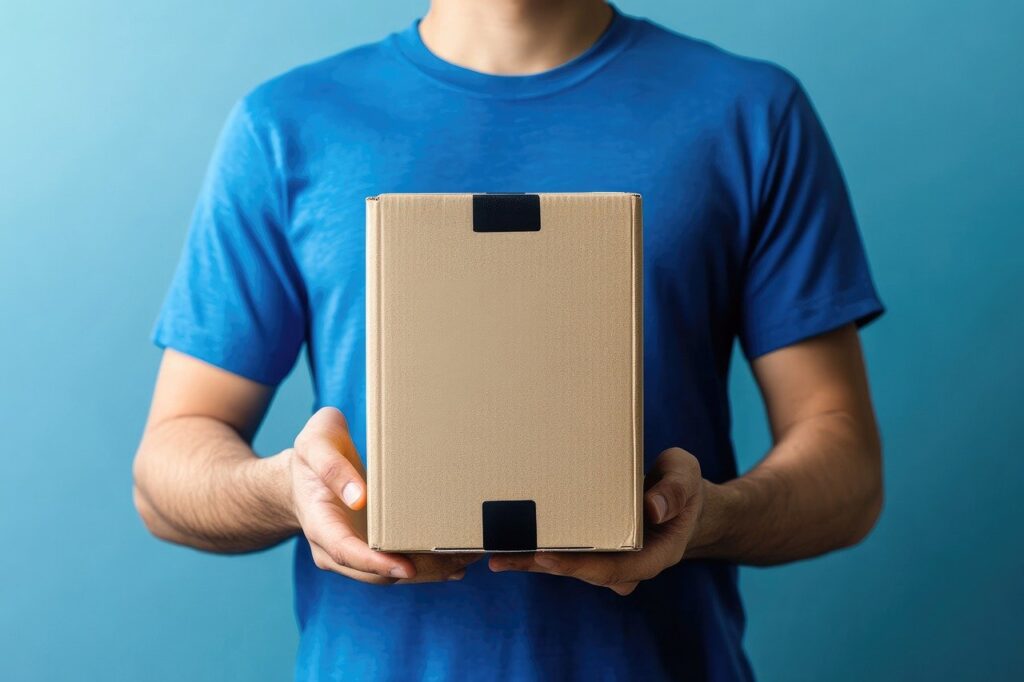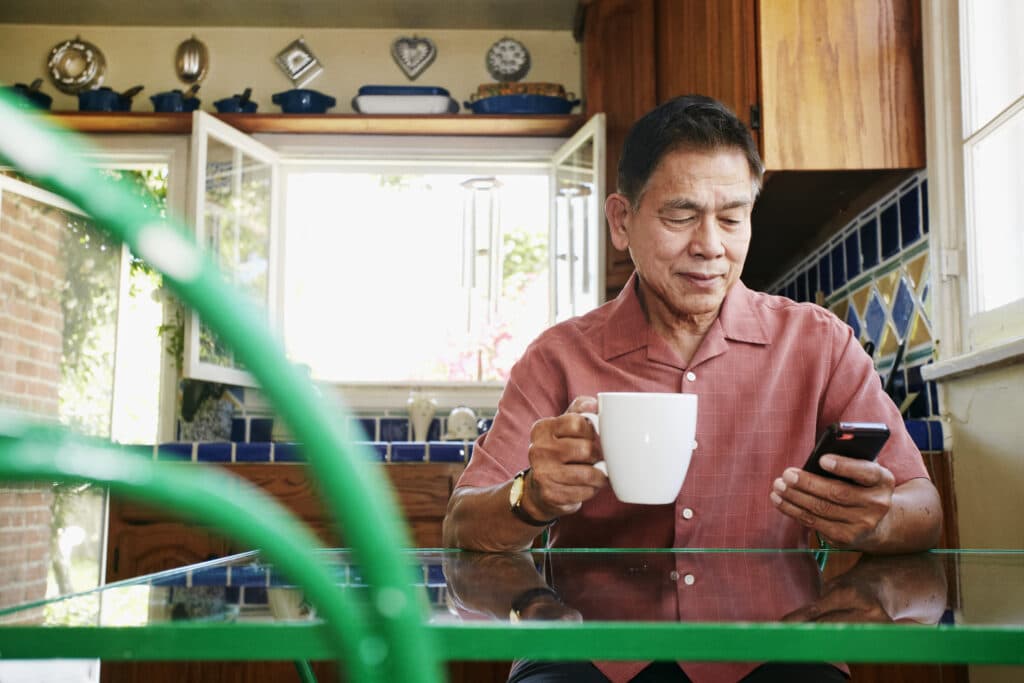Christmas is a time for giving, and for many Filipino americans, that means putting together a balikbayan box to send back to loved ones in the Philippines.
Although not strictly a Christmas tradition, the balikbayan box—also known as a balik bayan box—is often associated with the holidays, as many people send one to coincide with the season.
In this post created by our team here at Remitly, we’ll unbox the history and traditions of the balikbayan box and share tips for sending one.
What is a balikbayan box?
In North America, many people send care packages to loved ones in college or military service. Often, these boxes contain food and personal care products that the person might not be able to easily get while they’re away from home.
Think of the balikbayan box as a sort of care package—only the recipient isn’t the person who is away. In the case of these unique gift boxes, an ex-pat who’s moved away from the Philippines sends the box back home to give their loved ones a special treat.
In Tagalog, the national language of the Philippines, balikbayan is a combination of two words: balik, which means to return, and bayan, which means homeland. The term refers to a Filipino who was living abroad and is now returning to the Philippines.
Sending a balikbayan box has become an important part of filipino culture. More than 7 million boxes travel to the Philippines every year, and the balikbayan box industry is estimated to be as large as $1 billion.
What’s the history of the balikbayan box?
The history of the balikbayan box dates back to the 1970s. At that time, staggering unemployment rates led many Filipinos to search for work outside the Philippines.
In the late 1980s, the Philippine government introduced an initiative that lowered the cost of airfare, provided discounts for hotel stays, and significantly boosted baggage allowances.
Many Filipinos took advantage of the cheap cost of travel and began returning home for visits more frequently, especially during the Christmas season. Because they could bring so much luggage, they stopped carrying suitcases and began toting a large box full of gifts for their families. This new trend not only strengthened family ties but also allowed Filipinos to share pieces of their lives with loved ones back home. As they navigated the blend of their own customs and the vibrant Christmas traditions in the Dominican Republic, they brought back unique souvenirs and stories that enriched the holiday experience. These exchanges fostered a deeper appreciation for the diverse ways families celebrate together, regardless of distance.
Thus, the balikbayan box was born.
During the 1990s, the cost of shipping freight from USA fell dramatically. Suddenly, sending a balikbayan box home to family and friends became affordable, and many Filipino ex-pats seized the opportunity.
Those who couldn’t make it home for Christmas shipped a cardboard box, and people slowly began mailing the balikbayan boxes at other times of the year.
What do you put in a balikbayan box?
So, just what goes into a balikbayan box? Typically, people pack commonplace items in the U.S. and Canada but are tricky to find in the Philippines.
Some popular gifts include:
- Chocolates and candies
- Spam, tuna, corned beef, and other canned goods and non-perishable food
- Dry goods like oatmeal, pasta, and instant coffee
- Toiletries like toilet paper, deodorant, toothbrushes, toothpaste, body lotion, and bar soap
- Cosmetics and beauty product samples
- Collectible items
- Vitamins and supplements
- Bedding
- T-shirts, especially ones that bear Western brand logos or souvenir shirts printed with names of places
- Underwear for men, women, and kids
- Magazines, even outdated ones
- Household items like blankets, throw pillows, and home decor
- Small kitchen appliances, both new and gently used
- Gifts for kids like Barbie dolls and LEGO sets
- Happy Meal toys from McDonald’s
- Shoes, specifically athletic shoes from big brands like Nike and Adidas
Often, senders decide what to include in a balikbayan box based on shippers, discussions they have with their families, and the box size, and it’s common to include items that loved ones have requested.
Although this removes the element of surprise, it ensures recipients get the things they need and want.

Are there any restricted items that you can’t include in a balikbayan box?
Most shipping companies won’t allow you to send hazardous things like firearms, lighter fluids, and cleaning products containing certain chemicals.
Depending on the carrier, some flammable products like perfume and nail polish require special handling and may increase the cost of shipping the box.
In addition, laws in the Philippines prohibit including items related to gambling like loaded dice, prescription medications, illicit drugs, or obscene items like pornographic magazines.
It’s also important to consider the number of items you ship. If you send too many of one thing, the item may be considered commercial quantities rather than intended for personal use.
For example, you can send a few cans of Spam, but a whole case may be prohibited.
In this case, the Bureau of Customs may assess duties and importation taxes that your family members would be responsible for. Rules change frequently, so it’s best to check customs regulations before you send your box.
Generally speaking, the following are some prohibited items that you may want to avoid when sending balikbayan boxes:
- Toxic and hazardous goods that contain harsh chemicals
- Gold and other precious metals
- Adulterated or misbranded food
- Sweepstakes tickets
- Replica designer clothing, shoes, handbags, and accessories that violate the intellectual property code
Although not items prohibited by law or carrier rules, very fragile items are also not the best options when sending balikbayan boxes to the Philippines due to the high risk for damage.
Consult the freight forwarder of your choice before shipping balikbayan boxes for a full list of prohibited items.
It’s important that you don’t include any prohibited items, as illegal importation of goods can result in fines and fees as well as the destruction of your balikbayan box.
What’s the best way to pack a balikbayan box?
Balikbayan boxes contain plenty of special goodies, and you’ll want to pack your box carefully to prevent those items from being damaged.
To pack a balikbayan box properly, follow these tips.
Choose the right box
Balikbayan boxes tend to be heavy, so you need a strong box to hold everything without breaking. As a result, it’s best to buy a new box in the size you need rather than reusing an old empty box that you have around the house.
Some people like to place an empty box inside another to increase strength and provide an extra layer of insulation that guards against breakage.
Use fabrics as cushioning
Place soft items like clothing and linens on the bottom, top of the box, and sides. Padding the box this way creates a cushion that reduces the risk of breakage while sparing you the expense of packing materials like bubble wrap and air cushions.
Put heavier objects on the bottom
Put the heaviest items on top of clothing and fabric items. Keep lighter things that are more likely to break, like pasta or cereal, on the top to avoid crushing.
Place items that might leak in bags
Place lotion, gel, cream, and liquid items in plastic bags with zip closures like Ziploc bags to prevent messes if anything leaks. Wrap ceramic, porcelain, and glass items in old newspapers to protect them from breakage.
Include a packing list
Compose a list of everything in the box. Print two copies and place one on top of the items inside before you seal it, and keep the other copy for yourself in case anything goes missing during transit.
Use quality packing tape
Purchase packaging tape designed for boxes rather than duct or masking tape, which may come loose while in transit. Seal the top and bottom central seams, cut the tape long enough to wrap over the sides, and anchor the tape. Run your fingertips over the tape to seal it.

Do you wrap the items inside a balikbayan box?
Presentation is an essential part of gift-giving in the Philippines. While there are no etiquette rules about wrapping paper colors for Christmas presents, wrapping gifts you’re handing to someone in person is customary.
However, wrapping is less important for a balikbayan box, and people generally don’t expect things shipped overseas to be gift-wrapped.
But that’s not to say you can’t wrap your balikbayan gifts. Consider wrapping the individual items inside if you send a balikbayan box as a holiday gift, or if you’re double-boxing, you could gift-wrap the inner box.
Keep in mind that customs officials might open your box during transit. It is a rare practice to open every box, but the Bureau of Customs has the right to do so.
Normally, customs officials will only unseal a balikbayan box if they see something suspicious when x-raying the shipment.
How do you ship a balikbayan box?
If you’re in the U.S., you could send a balikbayan box through the U.S. Postal Service (USPS). That said, the USPS places limits on the maximum size and weight of international mail.
The weight limit to ship items to the Philippines is 40 to 70 pounds, depending on the service used, and rates tend to be very expensive.
There are also especialized balikbayan box companies, so a more affordable option is using a freight company specializing in delivering balikbayan boxes to the Philippines. There are four major providers:
- Forex: Based in the U.S. and ships from all 50 states
- Atlas: Based in the U.S. and ships from all 50 states
- Infinity Balikbayan Cargo (IBC): Based in Austria and ships from Austria, Slovakia, Hungary, Czech Republic, and Slovenia
- LBC Express: Based in the U.S. and ships from all 50 states
All four shipping companies offer pick-up services, so you don’t need to leave home to get your balikbayan box on its way. In addition to helping you send boxes, these shipping agencies can help you complete the balikbayan information sheet for declaring the contents of your box.
In some cases, an additional fee for pickup services might apply.
Do I have to pay fees to send balikbayan boxes in addition to the shipping fee?
Whether or not you will have to pay additional fees depends on a few factors. The Customs and Modernization and Tariff Act (CMTA) created a duty-free balikbayan box privilege. It allows people who meet the criteria for Qualified Filipino While Abroad status to send balikbayan boxes up to three times per calendar year duty-free.
To be considered a Qualified Filipino While Abroad and avoid the duty and import tax, you must fall into one of the following categories:
- Resident Filipinos: People who live in the Philippines but have temporarily relocated abroad through an international visa program like an inventor or student visa
- Non-resident Filipinos: People who have permanent residence in another country but have retained Filipino citizenship. These individuals may hold a foreign passport rather than one issued by the Philippines.
- Overseas Filipino workers: People who hold a special Philippine passport for working abroad
If you qualify for the balikbayan box privilege, you will need to fill out an official balikbayan box information sheet. You can obtain this declaration form from your shipping agency.
Under the rules for sending balikbayan boxes duty-free, you can send an unlimited number of boxes in your shipment. However, each balikbayan box must be under 0.20 cubic meters in size.
There are also limits on the total value of balikbayan boxes you can send each year. The total value cannot exceed PH 150,000.
If you send valuable items in your cargo box, you may be asked to provide receipts to establish their worth. You may not have to provide receipts for other personal effects and household items. Your cargo company can advise you on what documentation is necessary for sending your balikbayan box to the Philippines.
As previously mentioned, the Philippine government also prohibits you from sending a commercial quantity of any item.
If you don’t qualify for the balikbayan box privilege, you will likely have to pay taxes, such as an excise tax and a duty and import tax. Your shipping agency can provide you with more information about taxes and fees.
How long does it take to ship a balikbayan box to the Philippines?
The time it takes for a balikbayan box to reach the Philippines varies by carrier and whether you send it by ocean or air.
Forex advertises that it takes 35 days for a balikbayan box to get from Los Angeles to Manila by the ocean as sea cargo and nine days to travel by air cargo. It may take more time to arrive if you arrange a pickup service from your home, regardless of whether you choose sea or air freight.

FAQs
A balikbayan box is a type of care package sent by Filipinos living abroad back to their loved ones in the Philippines. It typically contains food, toiletries, clothing, and household items that are either difficult to find or more expensive in the Philippines. Sending these boxes has become a cultural tradition, with over 7 million boxes shipped annually, showing the importance of family ties and connection to homeland.
Balikbayan boxes are filled with everyday items that are often pricier or harder to find in the Philippines. Popular items include canned goods, chocolates, toiletries, clothing, vitamins, small kitchen appliances, toys, and household items like bedding and blankets. Senders often ask their families what they need, ensuring the box includes items that will be appreciated and useful.
Shipping times vary depending on the method and carrier used. Sea cargo from Los Angeles to Manila typically takes around 35 days, while air cargo takes approximately nine days. Additional time may be needed if you schedule a home pickup or live in a remote area.
